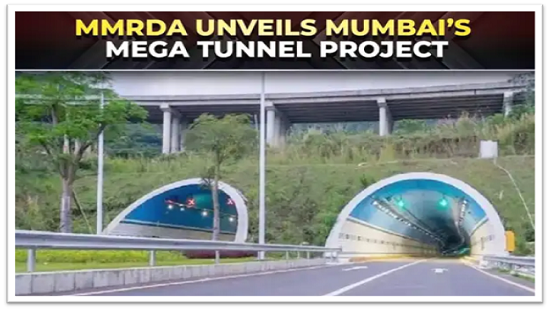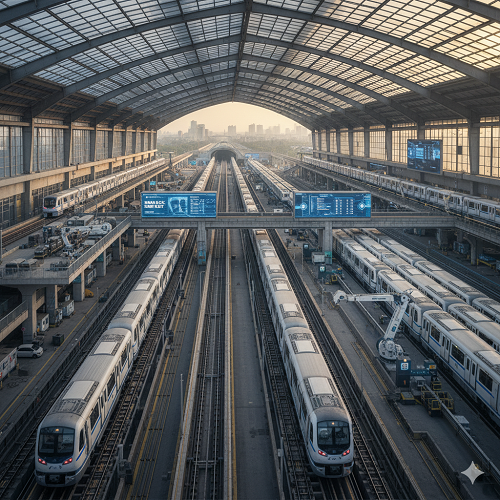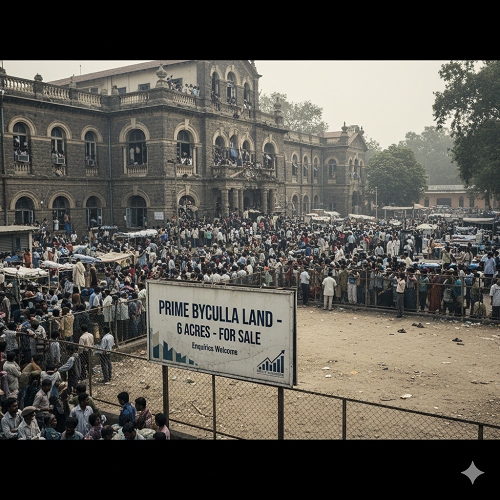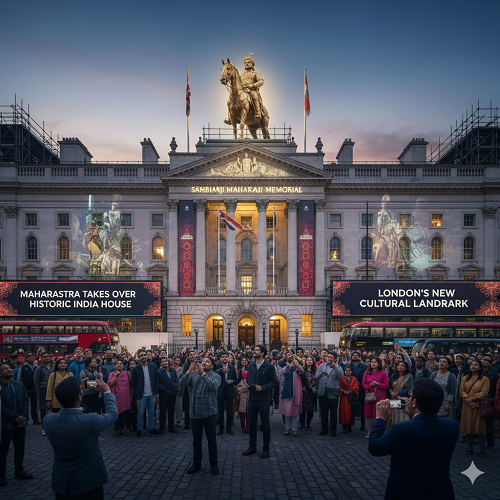
Mumbai’s 70-Km Mega Tunnel Project: The Game-Changing Corridor Set to Cut Airport–Worli Travel to 10 Minutes
Mumbai, a city defined by its density and relentless movement, is preparing for one of its most ambitious mobility upgrades yet. The Mumbai Metropolitan Region Development Authority (MMRDA) has begun work on a Detailed Project Report (DPR) for a 70-kilometre integrated underground tunnel road network. Once completed, it is expected to shrink the travel time between Worli and the Mumbai Airport to just ten minutes. For a city where even short stretches can take 40 minutes to an hour in peak traffic, the promise of such speed marks a significant shift in how mobility is imagined.
The new corridor is designed not merely as another transport project but as a structural change in the way Mumbai moves. By connecting major hubs such as the Coastal Road, the Bandra-Kurla Complex (BKC), the bullet train terminal, and the airport loop, the tunnel network aims to function as a new arterial backbone for the city. It aligns with MMRDA’s broader push toward integrated, high-speed, multimodal connectivity across the metropolitan region.
A New Era of Travel Efficiency
According to early reports, the tunnel project could fundamentally alter commuting patterns, especially along corridors known for chronic congestion. The Western Express Highway (WEH) and SV Road routinely operate beyond capacity despite successive expansions, metro construction, and flyover additions. An underground express corridor that bypasses the city’s surface traffic represents a rare opportunity to move traffic at high speed without battling space constraints.
Phase I of the project, spanning 16 kilometres from the Worli Sea Link to BKC and the airport, will be the cornerstone of the tunnel network. This alignment directly targets the high-traffic belt that connects south-central Mumbai with the metropolitan business district and the airport. If executed as planned, the 10-minute journey could redefine expectations for intra-city transportation.
A Three-Phase Blueprint for Underground Connectivity
The tunnel network will be developed in three phases, each designed to expand connectivity into key growth areas. The multi-phase structure ensures that technical and environmental evaluation can proceed responsibly, while also allowing the city to experience early benefits as the initial sections become operational.
The integrated grid will link the Coastal Road corridor, which is already reshaping traffic in south Mumbai, with major hubs such as the BKC bullet train terminal and the airport. This multi-corridor integration reflects a systems-thinking approach where new infrastructure strengthens, rather than competes with, existing modes. Instead of dispersing investment across unrelated projects, MMRDA is stitching them into a coherent network.
Built for High-Speed Mobility Beneath the Surface
The concept behind the new corridor is straightforward: develop underground expressways that allow uninterrupted, high-frequency vehicular movement. By separating fast-moving traffic from the surface roads, the tunnel network can operate at predictable speeds even during the busiest hours.
MMRDA officials have highlighted several advantages. Motorists will be able to bypass intersections, signals, and road bottlenecks entirely. The tunnel lanes will operate as controlled-access expressways, offering time savings and reliability for both personal and commercial vehicles. This could have significant spillover effects, reducing load on surface roads while improving travel experience across multiple corridors.
Environmental and Technical Assessment at the Centre of Planning
Though the project is ambitious, its execution requires rigorous evaluation. The DPR will focus on environmental impacts, geological assessments, engineering feasibility, and sustainability considerations. This underscores a growing awareness that large mobility projects must align with long-term environmental goals.
By diverting vehicles underground and improving the efficiency of travel, the corridor could help reduce emissions associated with prolonged idling, slow traffic movement, and inconsistent routing. It also supports the city's shift toward integrated and sustainable mobility, complementing metro lines, coastal roads, and multimodal hubs.
Supporting a Transforming Urban Region
Mumbai’s mobility landscape is undergoing a structural shift. With new metro lines, the Coastal Road, and the upcoming bullet train terminal in BKC, the demand for seamless linkages between these high-capacity systems is growing. The underground corridor aims to provide that missing connective tissue.
This approach is essential in a city where physical expansion is limited by geography. Unlike cities that can expand outward, Mumbai must build vertically and subterraneously. Tunnel infrastructure offers a solution that does not displace neighbourhoods or require major land acquisition, making it especially suitable for dense, built-up regions.
A Positive Public Response and High Expectations
The announcement has been welcomed by commuters who routinely travel between Mumbai’s central and western corridors. Reducing airport travel to ten minutes could dramatically improve daily schedules, logistics operations, and emergency mobility. More importantly, it could help redistribute traffic patterns, reducing pressure on peak-time arterial roads.
For businesses and logistics hubs in BKC, Andheri, and lower Worli, the tunnel network offers the potential for predictable travel windows. In a city where delays often cascade into lost productivity, even small reductions in commute time generate significant economic benefits.
A Strategic Investment in the City’s Future
As the DPR progresses, the project represents more than a mobility upgrade. It signals Mumbai’s transition into a new phase of infrastructural maturity, one that balances speed with sustainability and planning with execution.
When completed, the 70-kilometre underground tunnel corridor will serve as a critical link across the metropolitan network, supporting smoother travel, reducing congestion, and bolstering Mumbai’s long-term urban resilience. By integrating major transport systems and offering a faster alternative to surface roads, the project aims to redefine connectivity for millions of commuters.
In a city driven by movement, this initiative offers a glimpse of a future where travel is faster, smarter, and designed to meet the needs of a growing metropolis.




